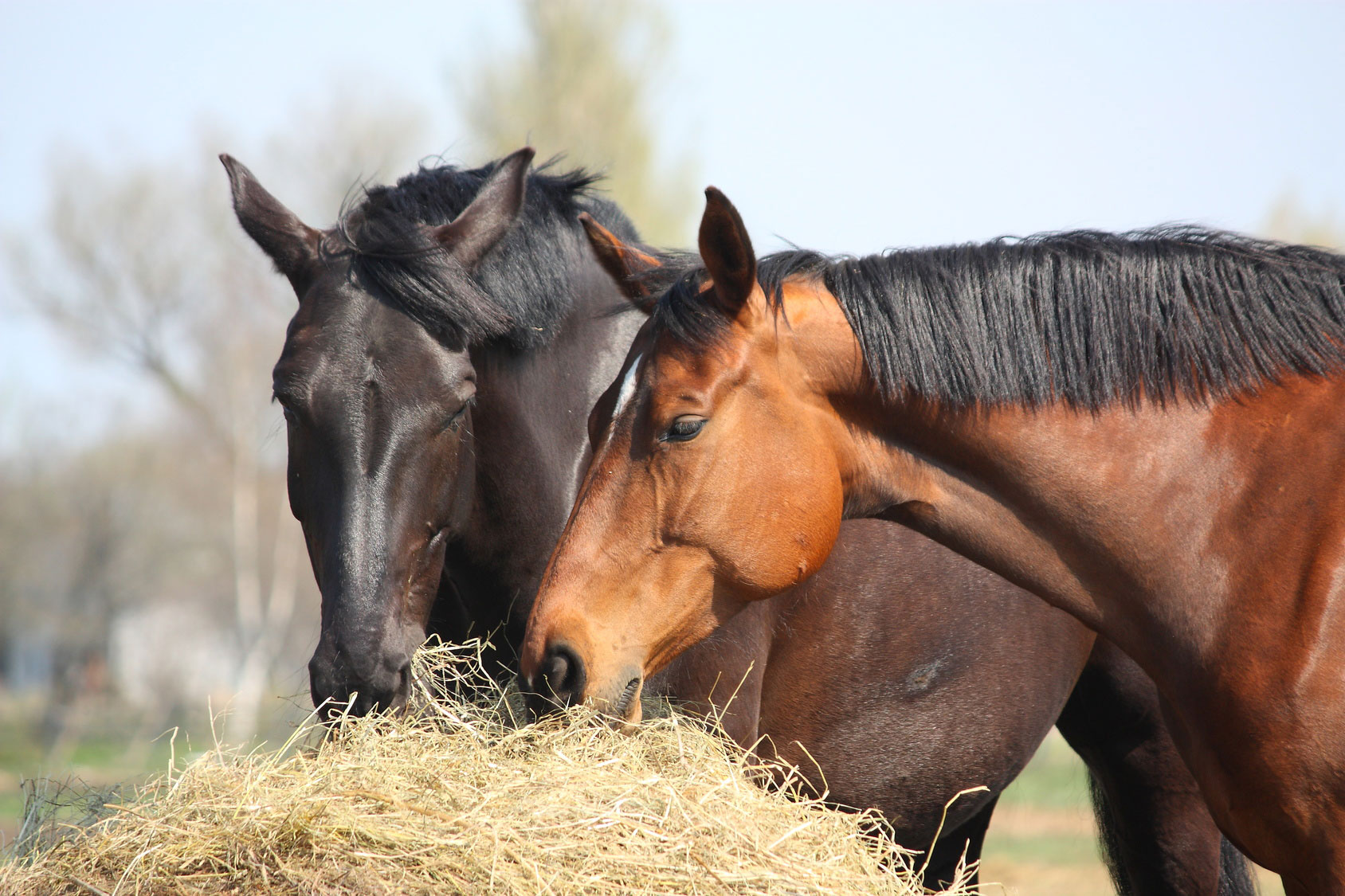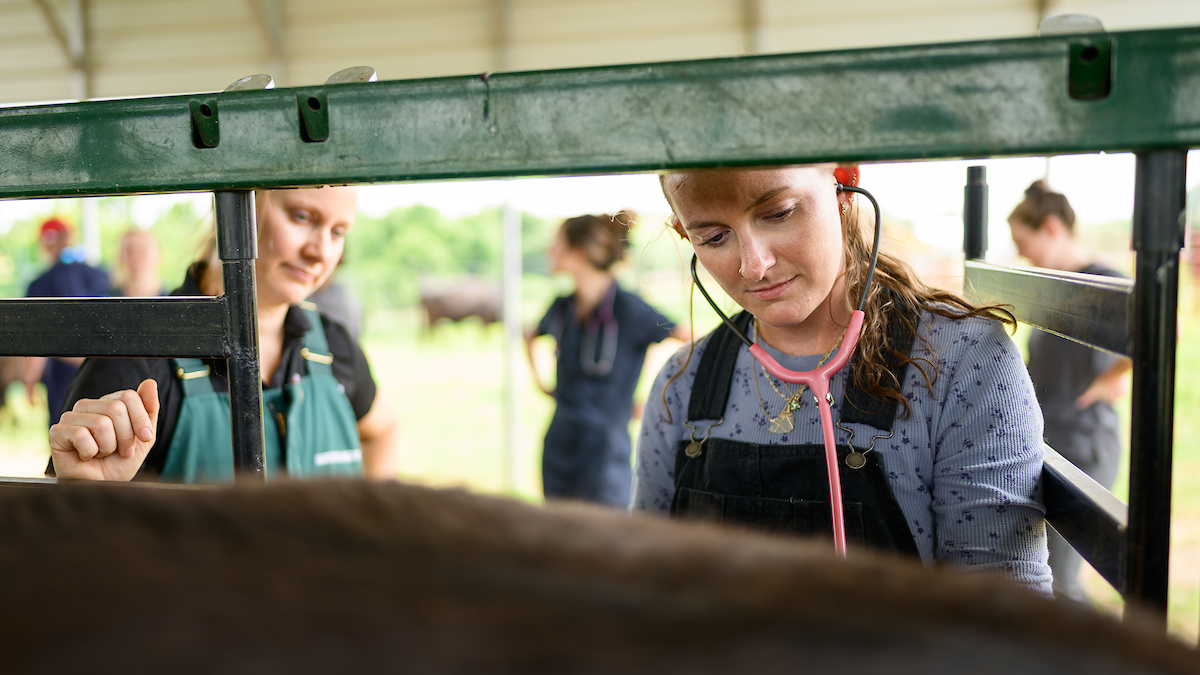CVM Surgeon Offers Insight into Early Equine Colic Prevention

When he talks about horse colic, equine surgeon Anthony Blikslager usually talks about antibiotics and biomarkers, about lesions and intestinal-scarring parasites.
He talks about twisted bowels and impacted colons and hernias.
But in his latest published study, Blikslager steps out of the operating room and into horse stables to talk directly to owners about what they can do to help lower their horse’s risk of developing colic in the first place.
“Colic Prevention to Avoid Surgery: A Surgeon’s Perspective,” published in the Journal of Equine Veterinary Science, is an easily digestible rundown of management conditions that can lead to colic, including poor nutrition or changes in diet, improper stall confinement and lack of exercise.
Blikslager, professor of equine surgery and gastroenterology at the NC State College of Veterinary Medicine, presented the findings at a June equine health symposium in Asheville.
“Some of the most common questions we get from horse owners are how they could have prevented this or how they can prevent it in the future,” said Blikslager.
So Blikslager, a world-leading expert in equine colic treatment, wanted to provide rules horse owners should live by. In his research paper, Blikslager breaks down several connections between horse management and colic, a common equine digestive disorder but also a top killer.
It’s vital guidance. Blikslager discusses when foals should be dewormed to decrease the risk of intestinal impaction caused by a parasite. He connects hay feed quality and failing to provide tapeworm-fighting medication with an increase in the impaction of the small intestine’s ileum.

He writes about how sudden restrictions in exercise after equine injuries have been frequently connected to large colon impaction. Large colon volvulus, the most fatal form of colic, has been linked to increased stabling hours and changes in foraging patterns.
Simple tweaks to management techniques, Blikslager writes, can have a major impact on reducing the prevalence of colic.
“Colic is really thought of as a management disease. The likelihood is that we’ve increased the incidence of colic because of what we do with them,” said Blikslager.
Some things are not possible to change, Blikslager also notes. For one, there’s the horse’s own anatomy working against it.
Horses digest food through hindgut fermentation, which very quickly passes forage roughage from the stomach along the small intestine and into the cecum and large colon. Blikslager says this technique may be less efficient than foregut fermentation, where partially digested food from the stomach enters the small intestine to efficiently absorb nutrients.
The hindgut likely developed because horses were bred for speed. A large gut chamber would not impede running, Blikslager writes.
And sometimes the causes of obstructions are simply unknown. They just happen.
“One of the things that makes colic cases interesting is that you rarely know what you’re getting into until you get into the abdomen,” said Blikslager.
Colic can be complicated to diagnose and treat. Though colic generally means abdominal pain, that’s really just one of many clinical signs of gastrointestinal disturbance.
Calling colic “abdominal pain” is like calling the flu “aching muscles.”
“Some of the most common questions we get from horse owners are how they could have prevented this or how they can prevent it in the future.”
Many equine colic cases are minor and clear up quickly with medication. Others require surgery and long courses of treatment. Symptoms range wildly, from lack of appetite and wanting to lie down to an extremely high pulse rate. All colic cases should be considered emergencies, and the NC State Veterinary Hospital’s equine service is open 24 hours a day, every day, to treat them.
“Every case is different. There’s a little variation in each one,” said Blikslager. “You still can easily run into things that haven’t been reported before.”
During his career, Blikslager has completed hundreds of equine surgeries, likely nearly a thousand, to treat colic. He still performs about 50 surgeries a year, typically involving cases that are particularly confounding.
Despite refined surgical techniques and the rise of new technology, such as MRI and ultrasound frequently used at NC State, colic cases are still often challenging and the equine services sees a lot of them. Year after year, the service averages around one colic case a day.
“I think people think about horses and believe it’s fate that they are going to see colic at some point,” said Blikslager. “But no, it’s not necessarily inevitable. Veterinarians were sort of trained to tell owners, ‘This is not your fault. This was an intestinal accident.’ And that can be true, but it should be paired with a chat about with what they can do going forward.”
~Jordan Bartel/ NC State Veterinary Medicine


